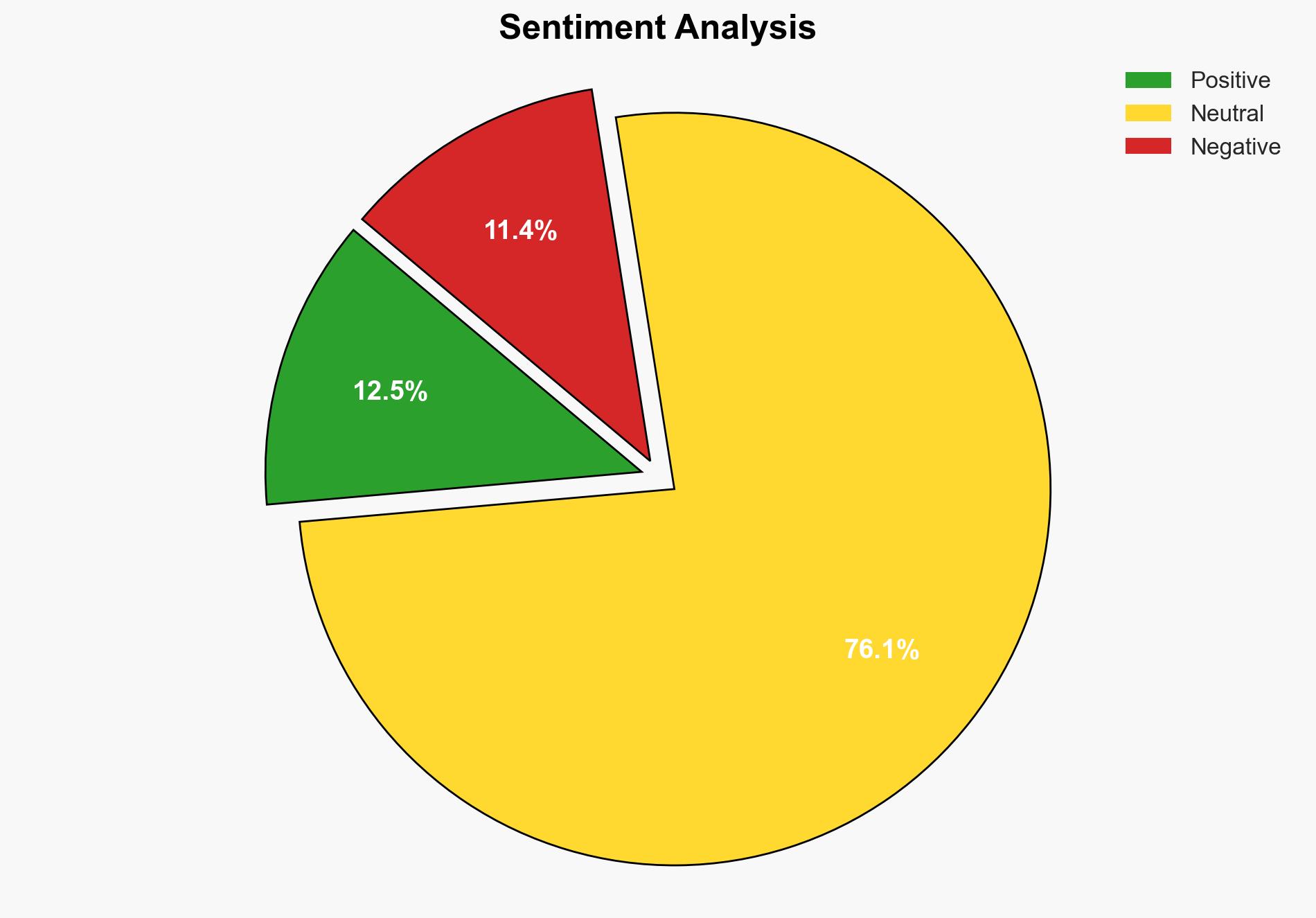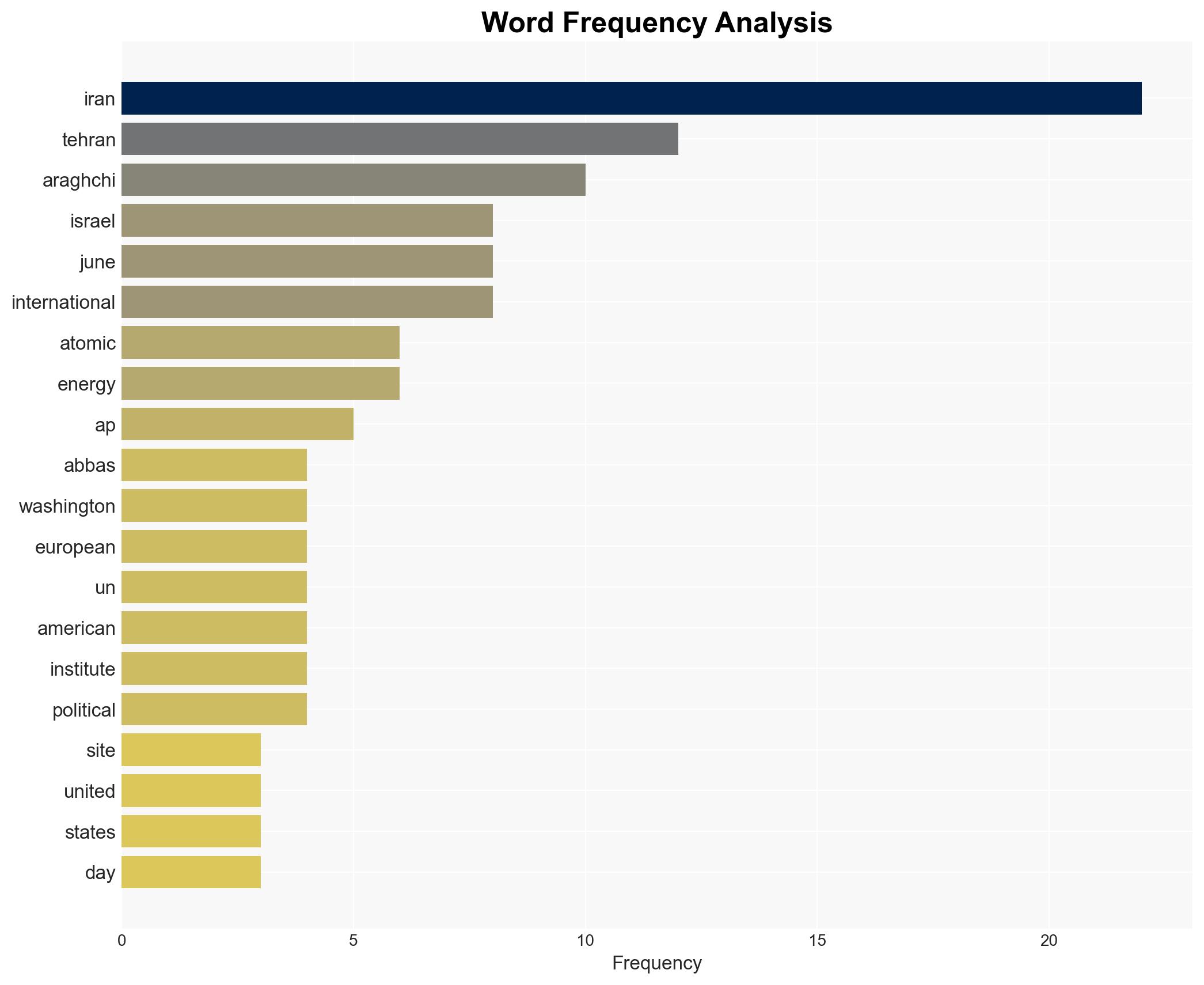Tehran claims uranium enrichment has stopped – Israelnationalnews.com
Published on: 2025-11-16
AI-powered OSINT brief from verified open sources. Automated NLP signal extraction with human verification. See our Methodology and Why WorldWideWatchers.
Intelligence Report:
1. BLUF (Bottom Line Up Front)
With moderate confidence, the most supported hypothesis is that Iran’s claim of halting uranium enrichment is a strategic maneuver to alleviate international pressure and renew negotiations, rather than a genuine cessation of nuclear activities. Recommended action includes increased intelligence surveillance and diplomatic engagement to verify Iran’s compliance and intentions.
2. Competing Hypotheses
Hypothesis 1: Iran has genuinely halted uranium enrichment to demonstrate goodwill and openness to negotiations with the international community.
Hypothesis 2: Iran’s claim is a strategic deception aimed at reducing international scrutiny and pressure while covertly continuing enrichment activities.
Hypothesis 2 is assessed as more likely due to Iran’s historical pattern of obfuscation in its nuclear program, ongoing geopolitical tensions, and the lack of independent verification of the cessation claim.
3. Key Assumptions and Red Flags
Assumptions: It is assumed that Iran seeks to avoid further sanctions and is motivated by economic pressures to re-enter negotiations.
Red Flags: The absence of independent verification from the International Atomic Energy Agency (IAEA) and Iran’s previous non-cooperation with international nuclear agreements are significant red flags.
Deception Indicators: The timing of the announcement following international criticism and satellite imagery indicating continued activity at nuclear sites suggest potential deception.
4. Implications and Strategic Risks
The potential for Iran to continue its nuclear program covertly poses a significant threat to regional stability. Failure to verify Iran’s claims could lead to escalated tensions with Israel and the United States, potentially resulting in military confrontations. Economic sanctions may be reinstated, further straining Iran’s economy and increasing domestic unrest.
5. Recommendations and Outlook
- Enhance satellite and cyber intelligence capabilities to monitor Iranian nuclear sites for any covert activities.
- Engage diplomatically with Iran and key international stakeholders to establish a framework for transparent verification of nuclear activities.
- Best-case scenario: Iran genuinely halts enrichment and re-engages in diplomatic negotiations, leading to a de-escalation of tensions.
- Worst-case scenario: Iran continues enrichment covertly, leading to military escalation in the region.
- Most-likely scenario: Iran uses the claim to buy time and reduce pressure while maintaining some level of nuclear activity.
6. Key Individuals and Entities
Abbas Araghchi, Mohammad Eslami, International Atomic Energy Agency (IAEA), United States, Israel, European states.
7. Thematic Tags
Regional Focus, Middle East, Nuclear Non-Proliferation, International Relations, Geopolitical Tensions
Structured Analytic Techniques Applied
- Causal Layered Analysis (CLA): Analyze events across surface happenings, systems, worldviews, and myths.
- Cross-Impact Simulation: Model ripple effects across neighboring states, conflicts, or economic dependencies.
- Scenario Generation: Explore divergent futures under varying assumptions to identify plausible paths.
Explore more:
Regional Focus Briefs ·
Daily Summary ·
Support us
·





